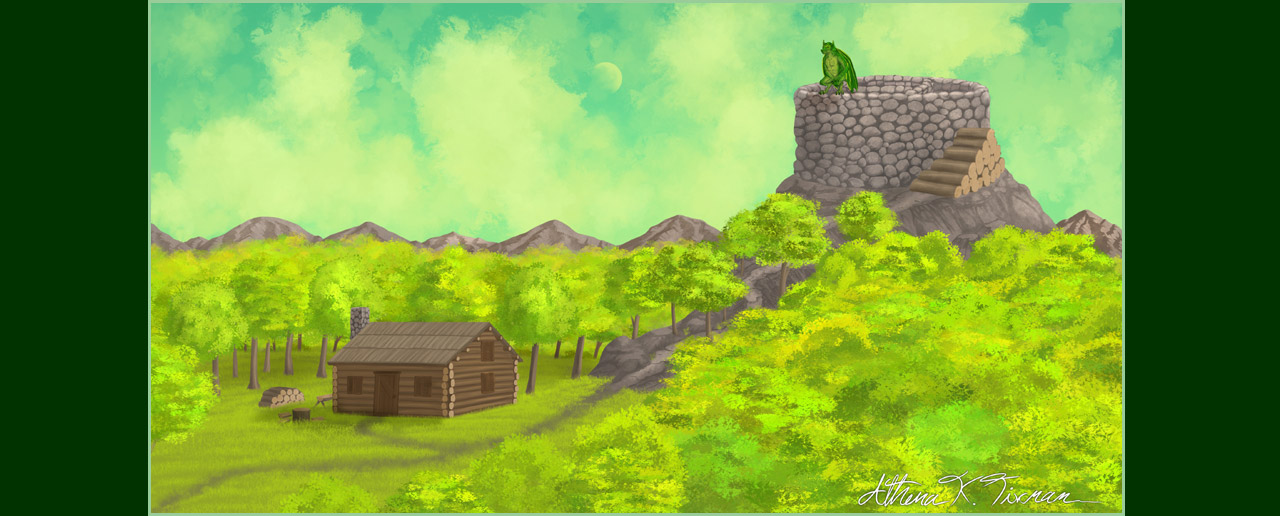
NewEarth Series Sample Content
For those readers that would like a taste of the world, characters and content in the NewEarth Series, the following samples have been provided. If you like what you find, do me a favor and follow the links to Amazon to purchase the titles. I would greatly appreciate it.
Over two hundred years ago a multinational conglomerate called EarthCorp bought the charter rights to establish settlements on a habitable planet. Their public goal was to prove that it was possible to harvest resources with little or no environmental damage to the planet. They collected their pioneers from all over earth, put them through a highly publicized orientation program and loaded them on ships amidst plenty of public attention and controversy.
In accordance with the settler’s charter agreement, a ship brought supplies and communication semiannually while picking up the settlers agreed upon production. That original charter promised half of all they produced and harvested with minimums listed for each pair. After fifty years, the second generation of settlers realized that EarthCorp, the combined environmental protection agencies and even the governments of earth no longer considered any of them citizens.
At that time, what structure remained from the original charter gave way to a different form of assembly among the pioneers. A brisk smuggling trade flourished among the colonists with smaller ships from other human settlements and colonies making deliveries much more frequently and filling specific orders. Through it all, EarthCorp continued to demand half of everything they produced.
During that time, the pioneers began bonding with their new planet. In an exchange of energy and power between the humans and the planet, certain psychic talents emerged according to individual skills and dispositions, allowing people to complete tasks with less effort. The first time two brawling pioneers manifested that power as a weapon, it made a profound and lasting impression on everyone. The ability to blast power, showing a larger and deeper connection with the planet, became something looked at with suspicion. Other, more subtle applications, which showed a smaller less substantial well of power exchange with the planet, was seen as a more desirable trait and far less threatening. The continual use of power allowed everyone to meet EarthCorp’s demands as well as put aside goods for the smugglers.
As each generation aged and the next took its place the colonists grew more and more resentful of the corporation’s demands. A conflict was inevitable when smugglers were caught by the Interplanetary Trading Authorities with goods from their planet that did not bear EarthCorp’s official seal. Using political maneuvering and bribes, the corporation persuaded the combined governments of earth to send a single ship to take control of the wayward colonies. When those troops arrived brandishing weapons and issuing threats, those with the greatest amount of power stepped forward and used their abilities and connection to the planet for defense. Smuggled weapons emerged in the hands of colonists and those soldiers that refused to surrender were killed.
The conflict ended abruptly when the colonists seized the ship. A few of the soldiers elected to stay and join the colonists adding to their population. Others managed to negotiate passage with smugglers back to earth. There was a United Earth embargo against the planet and EarthCorp issued many threats, but the colonists learned that the governments of earth were not interested in an open conflict on a distant planet. Thus the charter was broken.
Most of the population of New Earth deepened their connection as another new generation replaced the last. Technologies from old earth became a distant story, news brought by smugglers held less relevance. Skills were learned and refined while still more unexpected talents emerged among the human population and new structures of self-governance developed in the different colonies. Some people grew content while others went looking for adventure and new challenges. The overriding principal that survived was the need for low impact development and to preserve the resources and power of the planet.
Customs changed over time and craft families formed based on talent, skills or bloodlines. Each of those families adopted the names of their forbearer’s crafts which was often connected to their own. Farmers grew the food. Miners harvested gold and other metals. Woodsmen made all manner of wood products and hunted non-domesticated game. There were the Artisans, those who made beautiful things. Clergy were known for teaching and studying the past. Other families like the Tailors made clothing, Bakers made specialty foods and Smiths made tools. The different crafts formed rules, standards of behavior and dress. Each colony or settlement established its own set of laws.
The old earth views of race, religion and culture faded to a distant past as people married, combined talents and skills and new families emerged. Those with what was generally considered an ‘acceptable level’ of power tended to look down on those who had less connection and power. Those with more connection and power made others uncomfortable and were generally looked on with suspicion. Certain crafts were considered more genteel, others more basic and primitive.
Wealth and connections to political power were still factors that played a role in the social structures of the colonies, but the most powerful among them were living outside the colonies or masking their connection to the planet so they could move through the crowds without suspicion. Smugglers kept their connections with specific crafts and set up trades that allowed them to drop off goods, collect their gold and leave. There was only one pioneer family that was interested in maintaining their relationships with the smugglers and hearing the information they brought. That was the Farmers.
Find Me on Social Media
Newsletter Signup
Quick Links
This site powered by Web Marketing for Authors